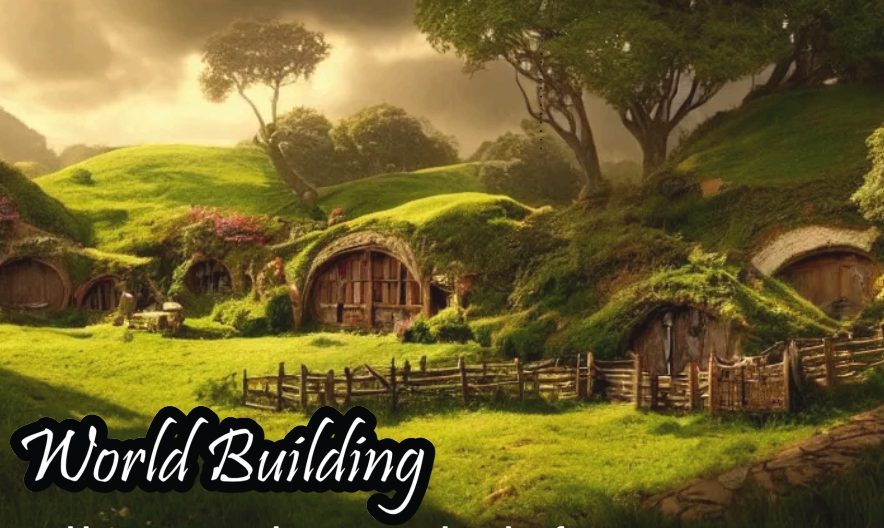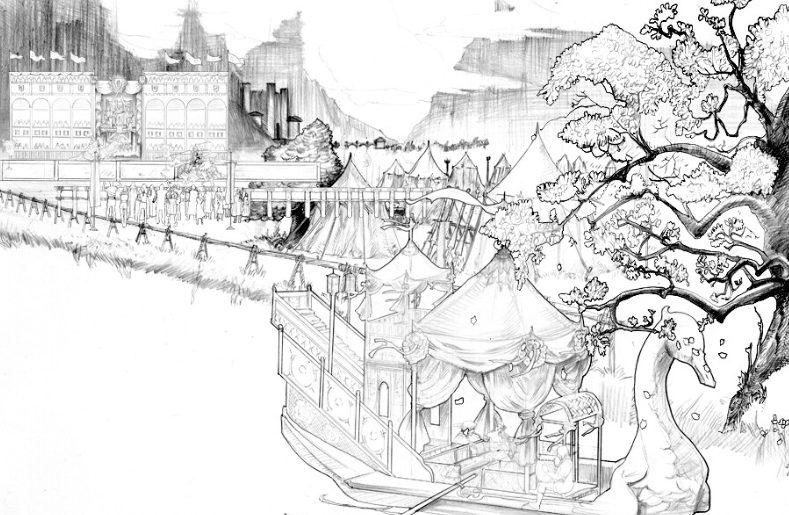
5 Add-Ons You Need, But Never Thought of
By Rick Duree
“The morning had dawned clear and cold, with a crispness that hinted at the end of summer.”
– A Game of Thrones, by George R.R. Martin
“A long time ago in a galaxy far, far away….”
– Star Wars, by George Lucas
“In a hole in the ground there lived a hobbit.”
– The Hobbit, by J.R.R. Tolkien
These epic first lines introduced some of the best world-building fantasy ever to light upon our collective imaginations. If you want to create majestic worlds that “bewitch the mind and ensnare the senses,” (Harry Potter, by J.K. Rowling) here are 5 add-ons you might not have included in your story, but desperately need.
1. Discover New Magics: Don’t Rely on Magic Missile

We all do it: choose Magic Missile when playing D&D. It’s consistent and a known quantity. But that’s exactly the wrong approach when defining magic in your fantasy world. The easy road in magic systems is to use the familiar. Elemental Magic, Runes, Spell Magic. But for more satisfaction in storytelling, take Robert Frost’s advice, “two roads diverged in a wood, and I—I took the one less travelled by.” Create a new magic system all your own.
If you haven’t read Brandon Sanderson’s Mistborn series, I highly recommend it. His work received critical acclaim for introducing an ingenious way of generating magic built around metal consumption. The magic system in my comic series Orphan Bloodline uses real-life blood disorders combined with cybernetic enhancements to transform the diseases into blood powers. It took a while to get all the functionality right, but in the end, it was well worth the struggle.
When creating your magical order, you have a few options. One is to be specific about the limits and fundamentals of your magic, establishing boundaries on what can and can’t happen in your world. Some examples of clearly defined magic include the aforementioned Mistborn and Orphan Bloodline systems. Be careful with this approach; specificity may lead to retcons in the future. Oppositely, if you don’t want to be tied down to a rule book, leave the rules unexplained. This way, you can grow the system through future stories yet to be envisioned, explaining away inconsistencies as unrevealed arcana. Examples of unexplained magic are found in Star Wars and Lord of the Rings.
2. Invent Gripping Customs and Jargon: True Fan Boys and Girls Love ’em

Ever wondered why Stephen King used the phrase “do ya kennit” in his comic series The Dark Tower? While reading the first issue, it took me a bit to gather what it meant. Since then, I’ve thought of “kennit” many times and even used it in my own vernacular. Stephen King has impacted my language, and you should want to do the same for your readers.
You’re the lexicon sleuth, the architect of customs, the culture god in your own fantasy. You get to create new terms to be spoken and ceremonies to be performed and believe me, creative jargon will really help immerse readers into your unique world. However, when wielding ultimate cosmic power as a culture god, avoid being bland. As you develop nations and peoples, allot interesting customs and jargon to each
group. It’ll make it easier to show a character’s personality when you can pull on distinct cultural norms from their origin story. Continue by adding specific ethnic challenges, fashion, or relationship standards. After all, Elves and Dwarves look, sound, and live very differently.
3. Collaborate with Comic Crossovers: But Don’t Kill Professor X
Collaborating with a fun, fellow comic creator can be one of your most rewarding writing experiences. Introducing another writer’s world into your story or vice versa can expand your cosmos in new and chaotic ways. It’ll impact your protagonist as they now have to share the page with other heroic personalities, showing a new side of their personality to readers.
Proceed with caution! Are you ready to jump into a comic crossover? Here’s Darren Close’s advice to those thinking about crossing legs with another creator. In his Killeroo and The 4 Horsemen collaboration with Stuart Black, Darren mentions that “crossovers can be a rewarding experience,” but it’s not all roses. Darren notes, “both creators need to research to know the other’s characters just as well as their own, or you’ll run into script issues. When someone writes your character doing things they wouldn’t do, it’s definitely a problem.” Also, it’s not only the script that can have hangups. Artists may experience stress trying to draw both sets of characters appropriately. Darren adds, “a problem is my character is tricky to draw, so there are challenges.” You can find more about Darren’s comic series Killeroo at www.Killeroo.com.
Darren Close, who collaborated with Stuart Black on Killeroo and The 4 Horsemen, notes that crossovers can be rewarding, but it’s not all roses. He mentions, “both creators need to research to know the other’s characters just as well as their own, or you’ll run into script issues.” Artists may also experience stress trying to draw both sets of characters appropriately. Find more about Darren’s Killeroo at Killeroo.com.
A mainstream example of character development from a comic crossover is Cyclops in “Avengers vs. X-Men.” No one expected Cyclops to kill Professor X, but it happened. Several new story arcs popped out of that turmoil. But I thought AVX was terrible, and I offer a heartfelt apology to Cyclops fans everywhere for having to see their hero commit patricide.
4. Use Real Life Cultures and Geography: Make Your Life Easier

A college frat boy once told me that the only easy thing to create in life was a baby. I told him I pitied his future wife, and he just looked at me confused. But I’ll admit, that frat boy got me thinking. Maybe there really are comparisons between birthing babies and world-building (wink). Now, I’m not going to assert that point here (I don’t want to get cancelled). But what I will speak to is the art of creation. To create
anything, from a book to a business, to a baby, is a huge accomplishment, but doesn’t come without struggle. So let’s try to make it as easy as possible.
When you’re creating worlds out of whole cloth, be prepared to deal with writer’s block now and then. Bruce Springstein once said that when he faces writer’s block in songwriting, he may go without a new big hit for years. Inspiration doesn’t grow on trees, it hits like lightning and we have to be prepared to act when we feel that genius condense upon us from the heavens. Save your heavenly dew for writing plot twists and character development. But for geography, politics, history, and so many other things, know
that you don’t have to create it all from scratch. Just ask George R.R. Martin. His epic saga A Song of Ice and Fire (known colloquially as Game of Thrones) was inspired by the true histories of the Lancasters and Yorks, two noble families that pursued an English civil war for control of the throne, a time period referred to as the War of the Roses.
Martin was not alone in using history as a guide in storytelling. Harry Potter is one of many examples of fantasy writers building their societies off of real world countries and cultures. Truth can be stranger than fiction, so study up on oddities of history, lesser known cultures, dark religions. Introduce them to your readers in intriguing ways and you will be praised for it. But I implore you to be mindful. Do not make
your religions and cultures seem farcical or simplistic. Far too many books and movies play religions, for instance, as being generally foolish and non-serious. If you want your world to be believable, you need to take culture and religion seriously. They are what your peoples have been built around for thousands of years. They’ve most likely influenced your characters in nontrivial ways, so make them as believable and realistic as possible.
5. Build Ancient Histories: Go Narrow and Deep
Speaking of thousands of years past, when writing your ancient histories, don’t make the mistake of going wide and shallow with your lore. Apply the phrase ‘less is more’ to your world building. Get specific with a few chosen elements of lore, and when you’ve nailed down those few elements, go deep and hard on them! When you have the histories in place, you will be able to more easily write deeper plots with unique twists that won’t leave your reader confused with too much information. On that note, here is a key piece of advice. Don’t throw up lore onto your reader’s face in drawn out dialogue. Be subtle. Drop bits and pieces at a time adding quick notes into the characters’ discussions as they pertain to the
story. An example of a video game that has consistently done this at a high level is Elder Scrolls. Skyrim is one of my favorite video games. I’ve played it through many times for hundreds of hours, and I consider the hours I spent with a controller in my hand as golden. Bethesda has taken the time to melt and smelt
and forge their world into what it is today, quite possibly the best video game ever made. Why do I say so? Because of world building.
Now you get to have a go at it. Traverse your soul to discover hidden truths that yearn to be told. Good luck, and may the odds be ever in your favor.
For additional research on World Building, check out this article at: http://kindlepreneur.com/world-building/. Feel free to contact me anytime for a chat, I’m easy to reach at: OrphanBloodline@gmail.com.

Rick Duree is an inspirational speaker, angel investor, professor of entrepreneurship, TV producer, missionary, musician, martial artist, author, and proud husband and father.
